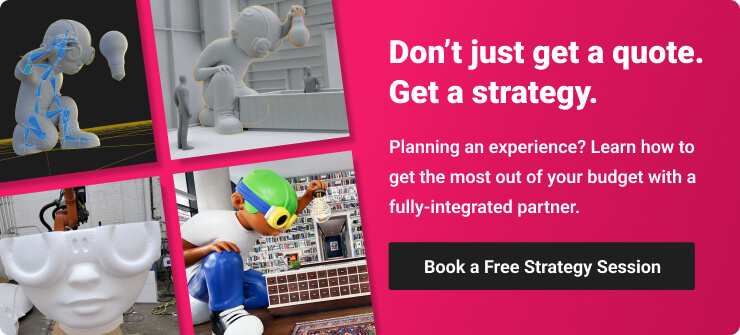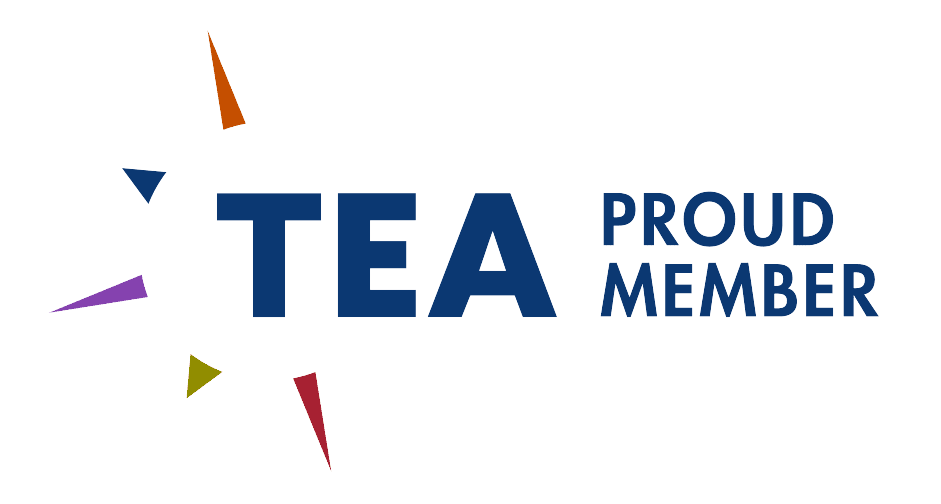Since its invention in the 1980s, 3D printing has revolutionized how things get made in industries from fashion to aerospace. Industrial 3D printers didn’t become commercially available til 2006, and since then, they have given designers, artists, industrial and medical manufacturers, engineers, architects – and even chefs – access to a whole new world of creative possibilities.
And while desktop 3D printers bring this exciting technology to the masses for hobbyists and makers, industrial 3D printers offer an unmatched level of speed, scale, and detail - as well as access to a wider variety of materials, including food, metal, concrete, and even human tissue - a truly amazing feat for modern healthcare.
Just what can this technology do?
Below, we’ll explore five incredible ways to use an industrial 3D printer. Its capabilities are exciting - and endless.
What is an Industrial 3D Printer?
3D printers are computer-aided additive manufacturing tools that allow fabricators to input a digital design and generate a specific 3D form. Industrial 3D printers are larger, faster, more precise, and more expensive models built for commercial applications and industry use. These printers can handle high volumes of data, and process and print faster and more precisely than desktop 3D printers.
Industrial-scale 3D printing is incredibly versatile and can produce unique, one-of-a-kind custom objects for brands as well as fabricate essential components in mass quantities. Likewise, its applications and potential are nearly limitless.

Five Amazing Uses for Industrial 3D Printers
Prototyping
3D printing allows brands to create, iterate and re-create product prototypes faster and more efficiently than ever before. This innovation enables companies to test different sizes, assemblies, and materials for cost efficiency, durability, and more. For example, Black Diamond uses in-house industrial 3D printers to prototype outdoor gear at full-scale, enabling the company to get products to market much faster than if they were outsourcing this step. Rome Snowboards also leverages an in-house 3D printer to develop prototypes for its boots and bindings.
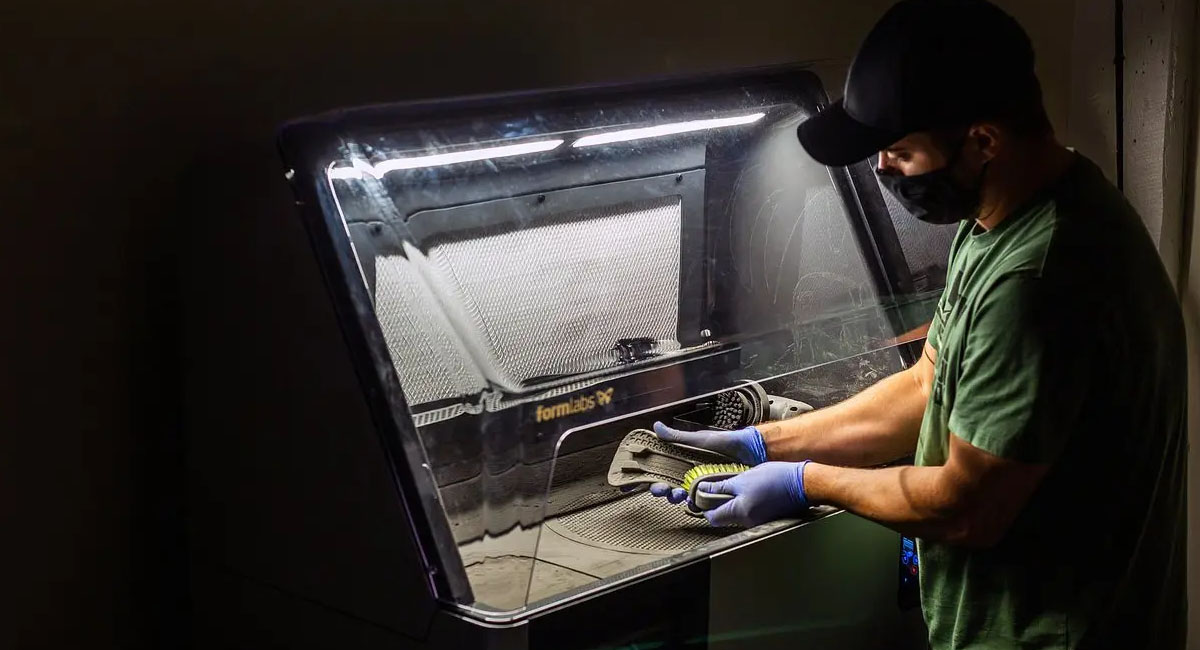
Rome Snowboards uses an industrial SLS printer to create prototypes for bindings.
Custom Manufacturing
3D printing also allows brands to create customized products ranging from shoes to dental retainers to bicycles in a quick and cost-effective manner. Athletic shoe brand, New Balance utilizes 3D printing technology to create custom shoes and cleats for athletes seeking top performance and personalized fit. While custom bicycle manufacturer, Superstrata, creates made-to-order carbon-fiber bikes using 3D printers to create a unibody bicycle with no seams.
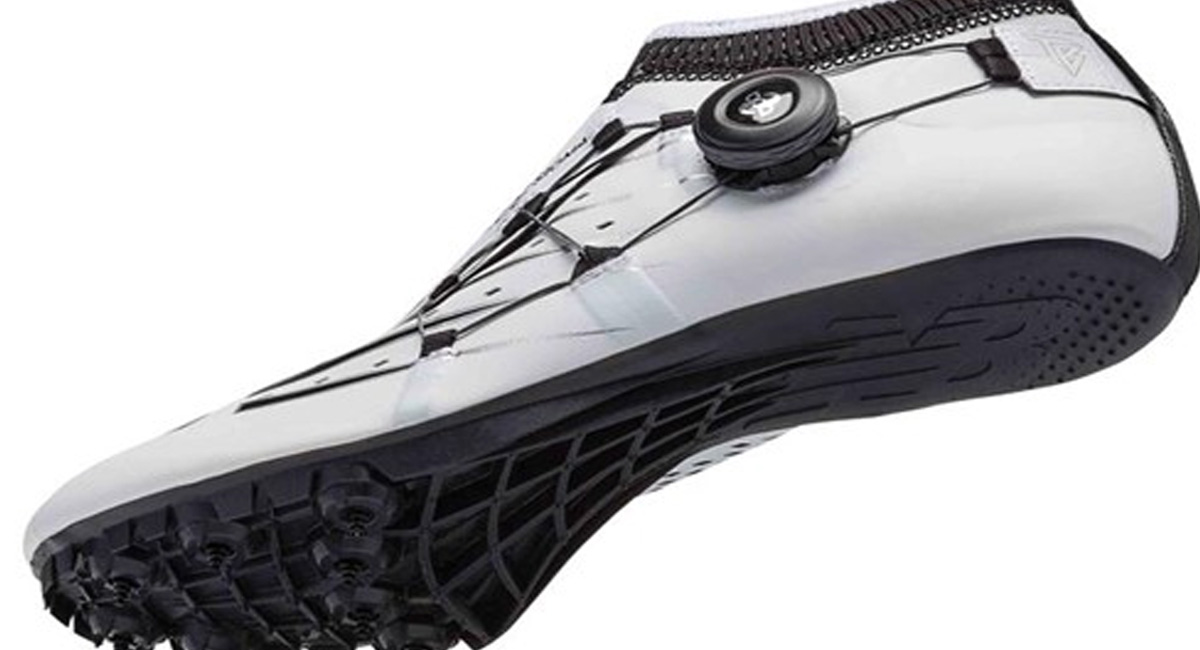
New Balance’s 3D Printed track shoe
Medicine & Healthcare
Industrial 3D printers are also being employed in the medical and healthcare industries. This digital fabrication technology is used to create anatomically correct training models, splints, prosthetics, custom medical devices, implants, and even pharmaceuticals.
Indeed, since human tissue is among the many materials that 3D printers can print, doctors at the University of Washington and The University of New South Wales have used 3D printing to facilitate bone growth. Synthetic skin, organs, and cartilage-like replacement noses and ears - have also been created with 3D printing technology. As science fiction-inspired as all of this may sound, it has incredible real-world impacts on patients.
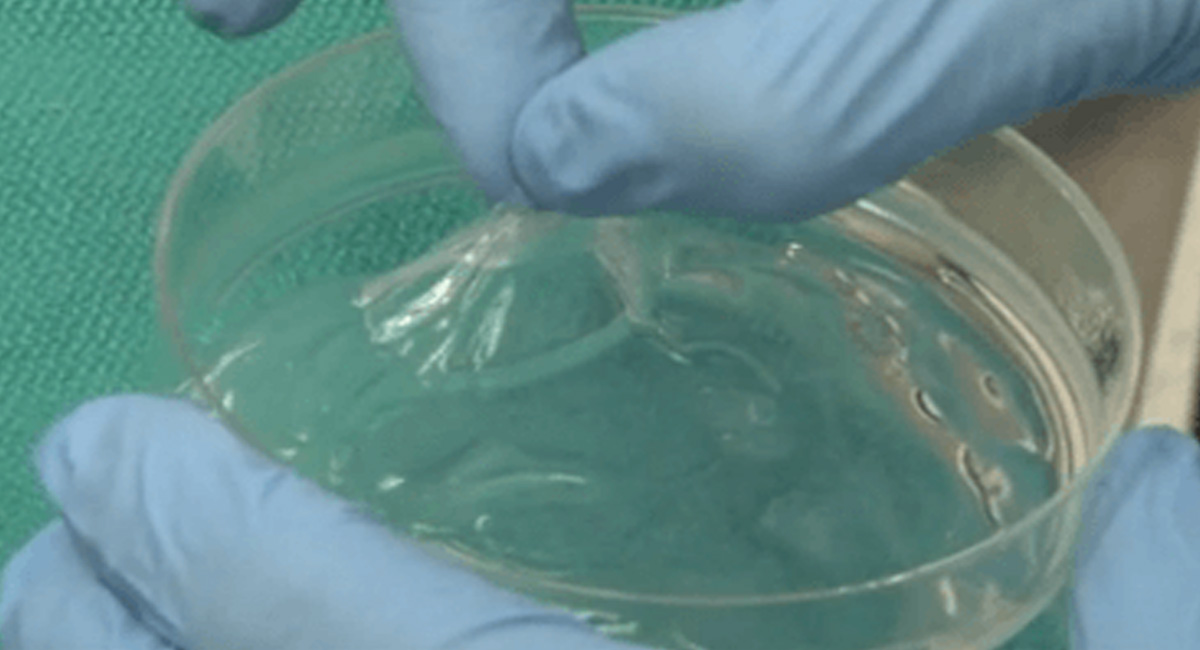
Synthetic 3D printed skin at Wake Forest University
Art & Fashion
From high-tech healthcare, we jump to highbrow culture. The fine art and fashion worlds have also adopted 3D printing technology to create larger-than-life sculptures, durable, public-facing exhibits, and environmentally friendly yet haute couture fashion.
Well-known adopters include Chicago-based pop artist Hebru Brantley, whose iconic Flyboy character now towers over two locations in New York and two more in Chicago. Also, New Orleans-based artist Ashley Longshore, whose studio includes larger-than-life mushrooms and giant flower chairs to allow guests to fully immerse themselves in her work. Finally, fashion designer Danit Pelig is well known for her 3D-printed designs and her drive to make 3D-printed fashion accessible to everyone.
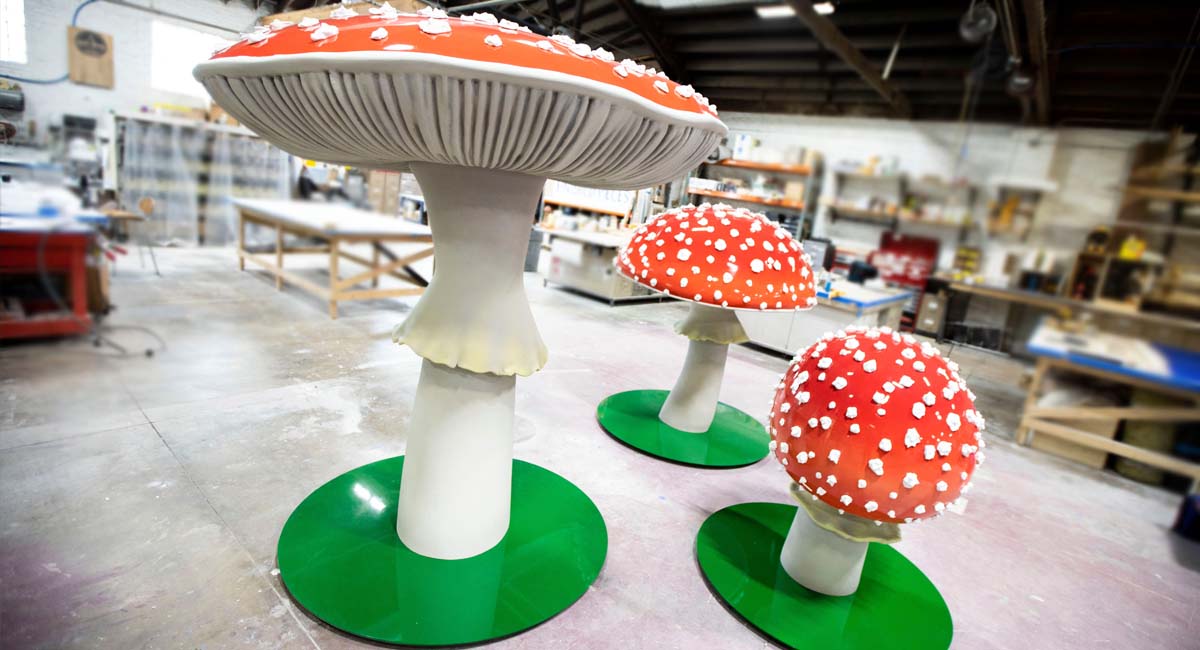
Bringing Ashely Longshore’s mushroom sculptures to life with the help of industrial 3D printers and CNC robots.
Higher Education
Finally, major universities have brought industrial 3D printing in-house to provide hands-on experience to undergraduate and graduate students in materials science, design, engineering, and robotics. Students have the opportunity to test materials, design original objects, develop new applications, and conduct research using their institutions’ 3D printing labs. Carnegie-Mellon, MIT, Virginia Tech, and Arizona State University are just a few of the schools providing students with access to 3D printing and other digital fabrication technologies.
Industrial 3D printers are here to stay. From runway fashion to live-saving medical devices, the scope, potential, and impact of this remarkable technology cannot be overstated. The Guinness Book of World Records even recently created a category for 3D-printed objects. How cool is that?
At Bridgewater Studio, we employ 10 industrial SLA printers to create innovative, highly-detailed custom objects for clients from artists to architects. Our full-service design and fabrication studio is a one-stop shop for bringing ideas to life.
Curious to see if 3D printing is the right approach for your next project? Book a free, no-pressure introduction to Bridgewater today. We’ll discuss your vision, explore approaches, and consider all the different digital fabrication tools at our disposal to help take your idea from concept to reality.
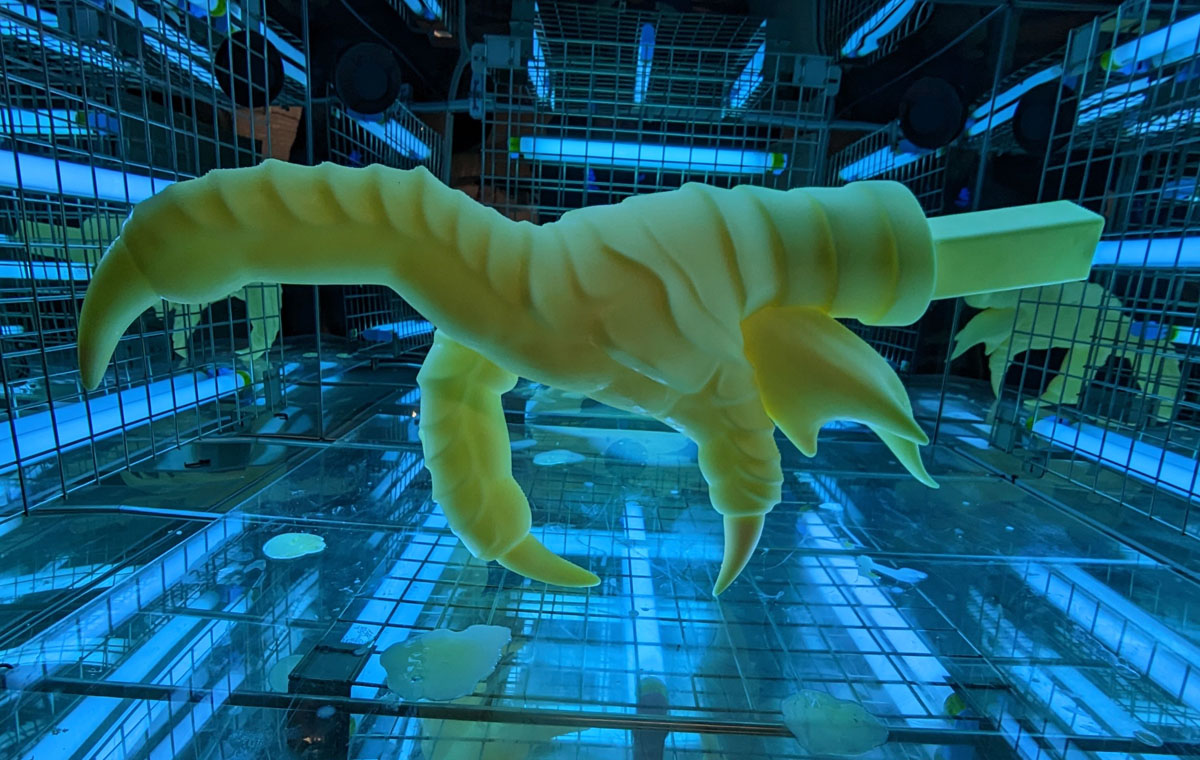

.png)
.png)
.png)
